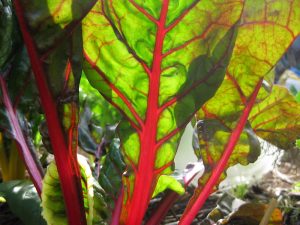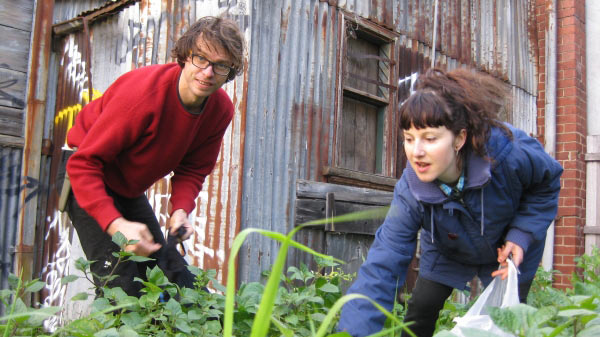 Beta vulgaris (subspecies maitima)
Beta vulgaris (subspecies maitima)
Family: Chenopodiaceae
A multi-coloured leafy relative of beetroot, rainbow chard and silverbeet are some of the easiest to veggies grow in the garden and you wont have to force yourself to drink wheatgrass juice, as these plants are packed with chlorophyll! Just be sure to steam or cook as the cellular structure and oxalates need a little breaking down to get to that goodness. Alternatively only eat the young leaves for salads.
History
These plants are often referred to as Swiss chard because of the extensive cultivation there. The name ‘chard’ comes from the Latin ‘cardus’ which means thistle, although there are , of course, no barbs . The ancestral form of the plant is Beta maritima or the sea beet which grows wild along coastlines throughout the Mediterranean area. The first cultivated chards pre-date the beetroot by about 1500 years.
Varieties
The most popular varieties grown in Australia are:
- Fordhook Giant (Silverbeet)
- Rainbow Chard – white, yellow, red and pink stems and very nutritious when cooked.
- Ruby Red Chard – dark green leaves and beautiful red stems, suitable for colder months.
Health and Nutrition
Okay, are you ready for how good this stuff is for you?
Chard and silverbeet’s vitamin K levels are almost shocking in their excess. If vitamin K was money and silverbeet was a young heiress, then silverbeet would be spiraling in a drug-soaked, never-ending socialite party all the way to rehab, and possible eventual salvation through Buddhism. You see there’s enough vitamin K in one 150g serve of rainbow chard or silverbeet for six times your daily requirements. It’s also packed with vitamins A, C and E. It is high in fibre and contains riboflavin and B6. It has high concentrations of manganese, magnesium, potassium, iron and other minerals. All of this amounts to a great food for preventing premature aging, colds and flu and anaemia. Chards are also high in beta-carotene, a strong anti-oxidant that helps to protect the eyes against sun damage and helps prevent heart disease and cancer.
Permaculture godfather Bill Mollison once remarked about the taste of some meat bought in Russia, which he suspected may have been not pork but human, that “you could taste the nutrients popping beneath your teeth”. Well the same might be said of rainbow chard so it may well form a kind of canibalism prevention role. The beneficial nutrients in chard are most easily accessed by light cooking as mentioned above. On both medical and ethical grounds we don’t recommend eating fellow humans at all! Check out this wonder food in more detail
Cultivation
A good companion for dwarf beans, onions and kohlrabi. Its growth is supposedly inhibited by runner beans and field mustard.
These plants will self sow very easily and you may find that over time they will do some of your garden work for you. They need a fairly open soil though so clay could be a problem (not in your VEG bed though).
When to sow
Can be sown anytime of the year that is frost free although the plant does not do too well in hot, dry conditions. We recommend the soil temperatures above 8° Celsius.
Spacing
20-40 cm apart.
Soil Depth
The seeds are multi-germed and will produce a few seeds from each ‘seed’ sow thin to the best performer. It is best to sow to a depth of about 3cm. You may sow a lot of seeds and thin then use as thinnings for salads.
Time to harvest
2-3 months depending on time of year.
Requirements
Tolerates shady environments (but will slow growth) and also salty winds. Benefits from mild nitrogenous (manure) inputs for good leaf growth. Use a liquid seaweed fertiliser, diluted to manufacturers suggestion and also (our personal favourite) worm juice!
Pests and diseases
Very easy to grow only some caterpillar, snail and potential Beet leaf miner. VEG can help you prevent or deal with them organically.
Uses and recipes
Rainbow chard is a delicious vegetable. Make sure to eat the coloured stems which are considered a delicacy in part of Europe, not just the leaves. The young leaves can be eaten raw in salads. Older leaves are sweetened up with some steaming, which, if you eat a lot of it, is important to destroy the oxalic acid.



